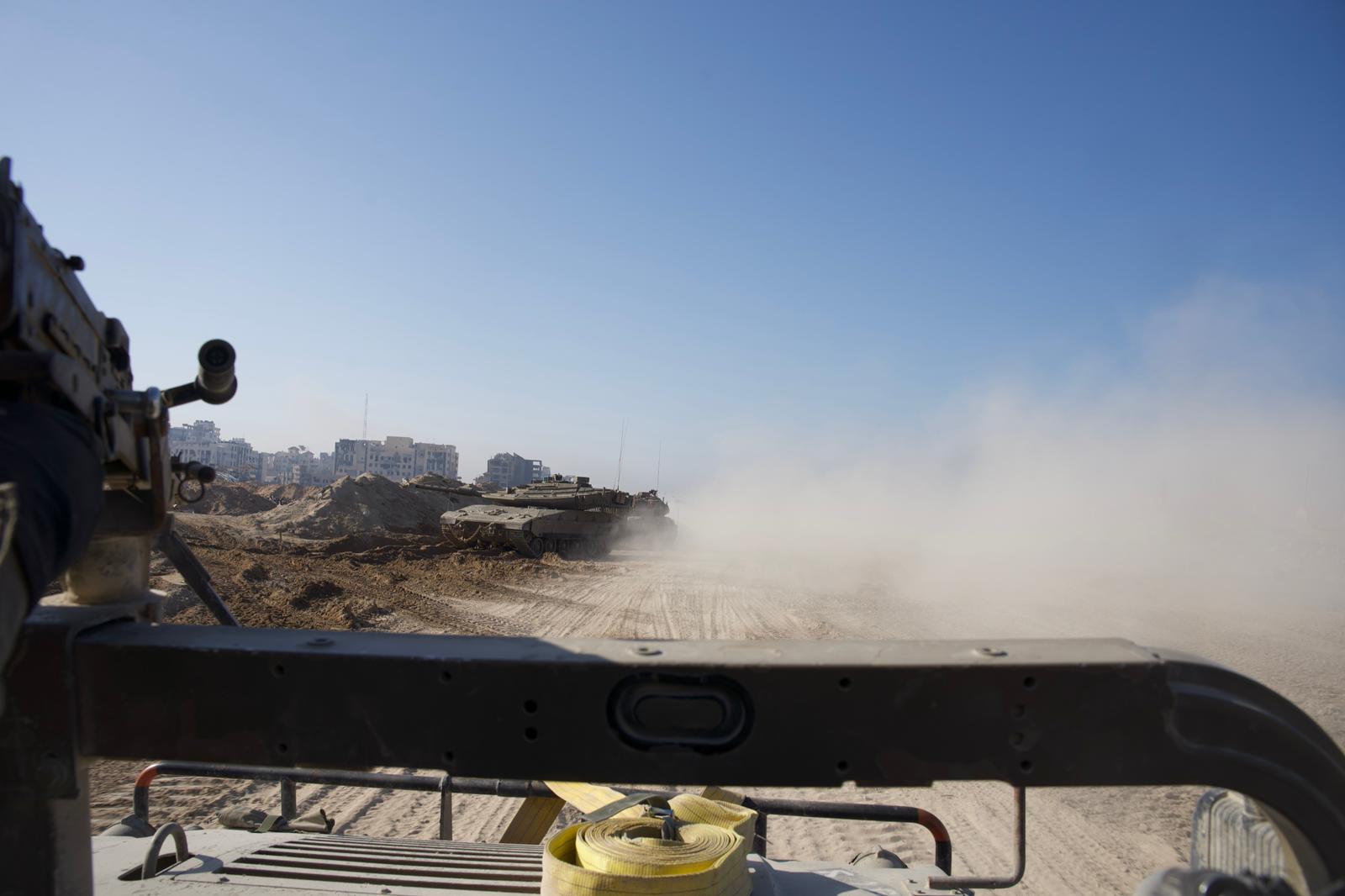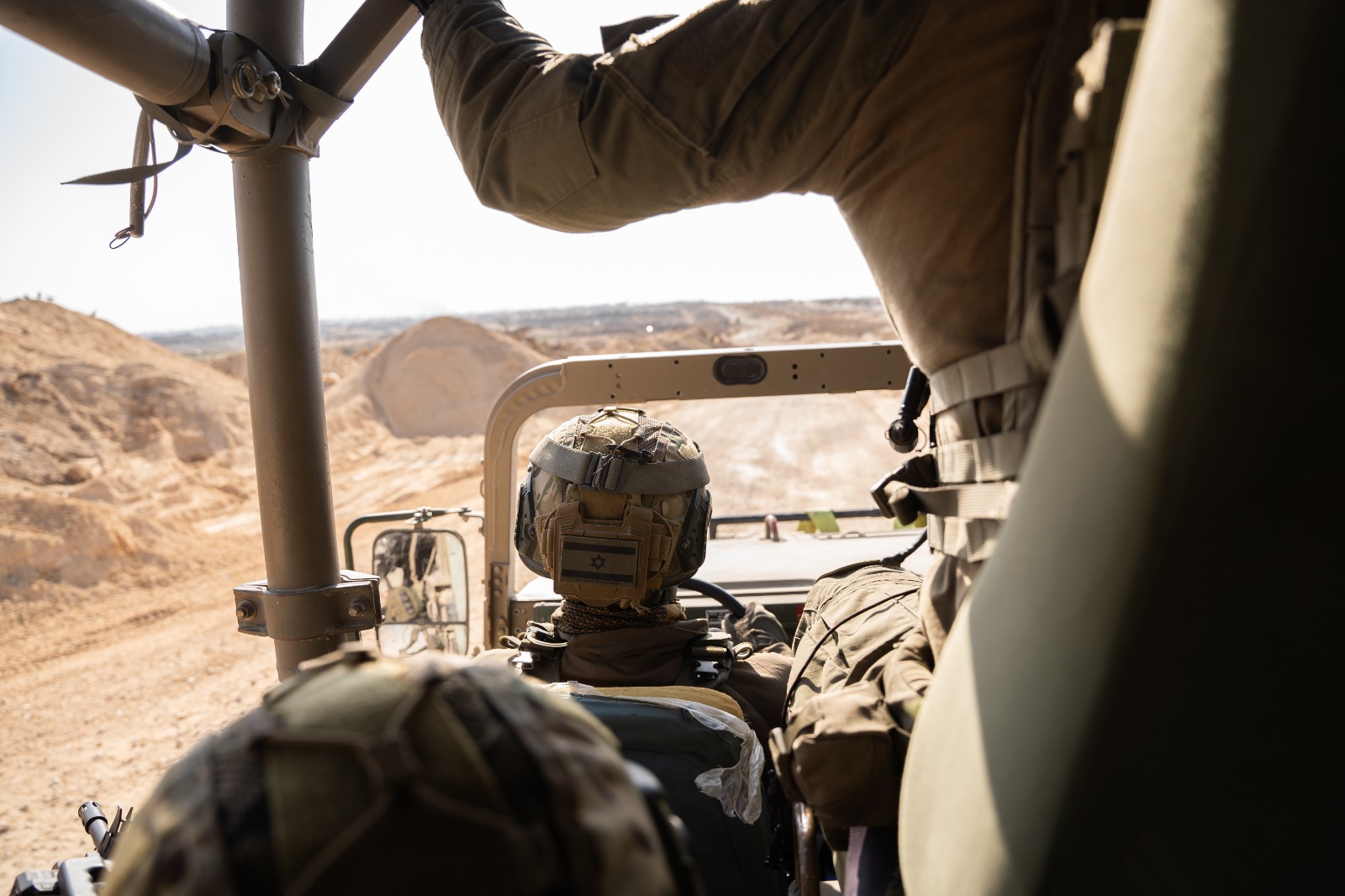
Photo credit: OHCHR
Cairo/Geneva/Washington/Tel Aviv: Once again after the breakdown of the pause on December 1, 2023, nowhere is safe in Gaza. In a significant development, the US today shot down an Israeli proposal for establishing a buffer zone between Gaza and Israel, making it clear that there should be no reduction in the size of Gaza.
In the last 24 hours around 700 people are feared killed in Gaza according to media reports. On December 3, 2023, alone, 349 people were killed and 750 injured according to reports from the Ministry of Health of the Palestinian government. As of December 3, 2023, as per Ministry of Health reports, more than 15,899 people have died, over two-thirds of them women and children. An additional 42,003 people, mostly women and children, have been injured.
The United States held Hamas guilty of such a huge civilian casualty claiming that in a war in a crowded urban environment, Hamas had been using civilians as human shields and hiding themselves, their fighters, and their infrastructure, behind civilians.

The war has now spread from north to south Gaza after Israel’s Prime Minister Benjamin Netanyahu accused Hamas of not upholding its part of the agreement, which included the release of all of the children and women according to a list that was given to Hamas and approved by it.
The Israeli Defence Forces (IDF) today said that its troops were also operating in the area of Jabalya, located 4 kilometres north of Gaza City, in North Gaza, after completing the encirclement of the Jabalya camp. Over the past day, Israeli Navy forces supported ground troops with strikes on dozens of operational targets belonging to terrorist organizations in the Gaza Strip. These targets include compounds from which terrorists attacked and fired mortar shells at the forces.
On November 2, 2023, working on Netanyahu’s directive, the Director of the Mossad David Barnea instructed his team in Doha to return to Israel following the impasse in negotiations.
The extensive joint mediation efforts by the Director of the CIA, the Egyptian Intelligence Minister and the Qatari Prime Minister had so far led to the release of 84 children and women from the Gaza Strip, along with 24 foreign nationals. However, Israel said it was conducting this investigation to look at Hamas using rape as a weapon of war against Israeli women and girls on October 7, 2023, and claimed it had collected more than 1,500 eyewitness accounts of sexual assault, sexual violence, including rape against women and girls that day.
Responding to such claims of Israel, the United States said it did not have its “own” independent assessments to make right now. “We don’t have people on the ground conducting such assessments,” the United States Department of State spokesperson Matthew Miller said today (IST) in Washington, but quickly added, “They’ve committed rape. We have no reason at all to doubt those reports…the fact that they continue to hold women hostages, the fact that they continue to hold children hostages, the fact that it seems one of the reasons they don’t want to turn women over that they’ve been holding hostage and the reason this pause fell apart is they don’t want those women to be able to talk about what happened to them during their time in custody – certainly there is very little that I would put beyond Hamas when it comes to its treatment of civilians, and particularly its treatment of women”.

With the war spreading to South Gaza, the Israeli Defense Forces (IDF) has asked civilians to go to UN-designated facilities in Khan Younis, in Rafah city, in central Gaza, and in the south to those places which are on lists of deconfliction zones that should not be the target of military campaigns. Washington too stated that there are already people who are sheltering in those deconfliction zones. “As the campaign moves to the south and Israel evacuates specific neighbourhoods or orders specific neighbourhoods to be evacuated, that is where people should go,” Miller advised.
However, there are questions over the capacity of these safe zones to absorb the tens of thousands of civilians.
About 1.9 million people, nearly 80% of Gaza’s population, are estimated to be internally displaced. Recent evacuation orders cover 20% of Khan Younis and localities east of Khan Younis, which before the hostilities were home to nearly 117,000 and 352,000 people, respectively.
“Look, when it comes to making a choice about being in an area that is undergoing major combat operations versus evacuating to an UN-run – either a refugee centre or another UN-run facility where you can get food and water and medicine, certainly I think the choice is pretty clear. But the conditions are still pretty difficult, even in those sites, and we’re trying to increase the level of assistance that we get in to address that humanitarian issue,” Miller said.
As more civilians in southern Gaza receive immediate evacuation orders and are forced to move, more people are being concentrated into smaller areas, while the remaining hospitals in those areas run without sufficient fuel, medicines, food, water, or protection of health workers.
WHO warned that it was “less able to provide support, given dwindling access to our supplies or any assurance of safety when we move supplies or staff.”
On the morning of November 4, 2023, WHO was contacted with advice to move as many medical supplies as possible from a warehouse in Gaza, situated in an area ordered to be evacuated. “Access to storage could become challenging over the coming days due to ground operations,” WHO said.
Also, there have been earlier instances when people were told to go to certain areas which would be safe but were thereafter bombarded. “…people were told to move to the south without giving a specific place to go, and then there were attacks on Khan Younis after people had moved to Khan Younis,” acknowledged Miller in Washington today (IST). He told media persons today that the US does not want to see a military campaign in the south “that looks like the north”, and the message was conveyed to Netanyahu.
“And what we mean by that: We do not want to see the same level of civilian casualties; we do not want to see the same level of mass displacement. They briefed us on plans that were very detailed that they said were intended to avoid mass displacement and civilian casualties. But as the Secretary [of State Antony J. Blinken] made clear, it’s not just intent that matters; it’s results. And we are watching very closely and will continue to watch very closely before we draw any definitive assessments,” Miller said. He claimed there was “improvement” in Israel’s plans for Khan Yunis, and for the south. “We have seen them evacuate specific neighbourhoods rather than entire neighbourhoods, so the numbers of displaced persons will hopefully be lower in southern Gaza than it was in the north. But when it comes to results, we are going to monitor it very closely,” he asserted.
WHO, however, made it clear that intensifying military ground operations in southern Gaza, particularly in Khan Younis, were likely to cut thousands off from health care – especially from accessing Nasser Medical Complex and European Gaza Hospital, the two main hospitals in southern Gaza – as the number of wounded and sick increases. Lack of access would also limit WHO’s ability to deliver aid to these hospitals, it said and warned that following the resumption of hostilities, including heavy bombardment, “Gaza cannot afford to lose another hospital as health needs continue to soar”.
It may be mentioned that on a recent visit to Nasser Medical Complex in Khan Younis, the WHO team described the situation inside as “catastrophic”, with the building and hospital grounds grossly overcrowded with patients and displaced people seeking shelter.
The emergency ward there is overflowing with patients. There is a shortage of health workers compared to the overwhelming needs. Those who are available have been working non-stop and are exhausted. Many patients are being treated on the floor. Bed capacity has been overwhelmed. Patients and families sheltering at the hospital are scared for their security.
According to the Ministry of Health, the bed occupancy rate at operational hospitals stands at 171%, while in the intensive care units, the occupancy rate is up to 221%.
Currently, there are 1000 patients and thousands of people sheltering at the 350-bed Nasser Medical Complex, and 1000 patients and an estimated 70,000 people sheltering at the 370-bed European Gaza Hospital. Both hospitals are three times beyond their capacity.
In less than 60 days, the number of functioning hospitals has dropped from 36 to 18 in Gaza. Of these, three are only providing basic first aid, while the remaining hospitals are delivering only partial services. Those able to admit patients are delivering services well over their intended capacities, with some treating two to three times as many patients as they were designed for. The 12 hospitals that are still operational in the south are now the backbone of the health system. Disease surveillance systems are hampered, but syndromic surveillance has noted increases in infectious diseases, including acute respiratory infections, scabies, jaundice, diarrhoea, and bloody diarrhoea. Shelters in the south are also reporting cases of acute jaundice syndrome, a worrisome signal of hepatitis.
From October 7 to November 28, 2023, WHO recorded an unprecedented number of attacks on health care: 203 attacks on hospitals, ambulances, medical supplies, and the detention of health-care workers. This is unacceptable. There are means to protect civilians and civilian infrastructure, and they should be instituted.
“The only viable solution is a sustained ceasefire,” WHO stated.
– global bihari bureau





